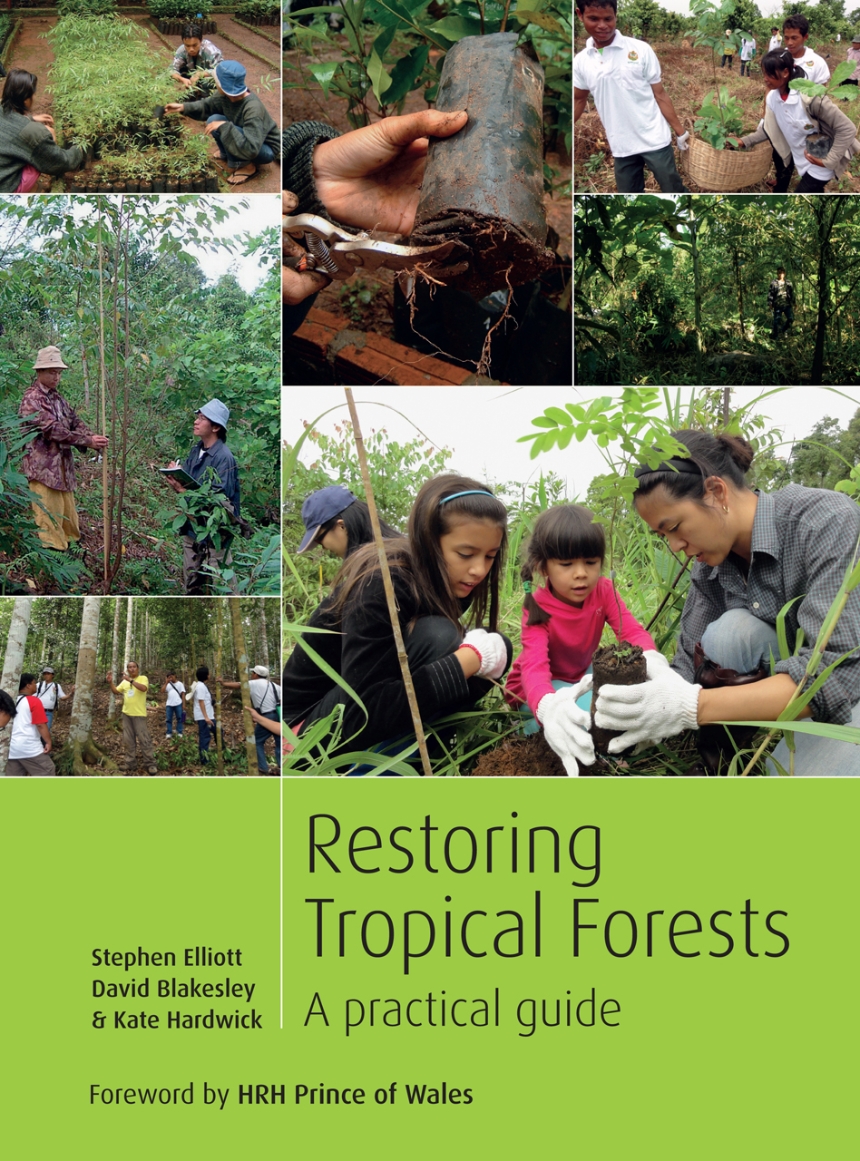The book is based on the innovative techniques developed at Chiang Mai University’s Forest Restoration Research Unit, Thailand. It takes a threepart approach, first looking at effective general concepts of tropical forest dynamics and regeneration, then at specific proven restoration techniques, and finally at how to use research methods to refine and adapt the techniques to local ecological and socioeconomic conditions. In addition, illustrations and case studies of successful applications help to make this a global, user-friendly guide. Whether for developing new techniques or improving old ones, Restoring Tropical Forests is a valuable tool for effective, ecologically sound change.
356 pages | 50 color plates, 200 line drawings, 6 maps | 7 1/2 x 10 | © 2013
Biological Sciences: Botany
Earth Sciences: Environment
Reviews
Table of Contents
Foreword by HRH Prince of Wales
Preface
Acknowledgements
1. Tropical deforestation: a threat to life on Earth
1.1 Rate and causes of tropical deforestation
1.2 Consequences of tropical deforestation
1.3 What is forest restoration?
1.4 The benefits of forest restoration
Case Study 1 – Cristalino
2. Understanding tropical forests
2.1 Tropical Forest types
2.2 Understanding forest regeneration
2.3 Climate change and restoration
3. Recognising the problem
3.1 Recognizing levels of degradation
3.2 Rapid site assessment
3.3 Interpreting data from a rapid site assessment
Case Study 2 – Littoral forest restoration in south-eastern Madagascar
4. Planning forest restoration
4.1 Who are the stakeholders?
4.2 Defining the objectives
4.3 Fitting forests into landscapes
4.4 Choosing sites for restoration
4.5 Drafting a project plan
4.6 Fundraising
5. Tools for restoring tropical forests
5.1 Protection
5.2 ‘Assisted’ or ‘accelerated’ natural regeneration (ANR)
5.3 The framework species method
5.4 Maximum diversity methods
5.5 Site amelioration and nurse plantations
5.6 Costs and benefits
Case Study 3 - Area de Conservation Guanacaste (ACG)
6. Grow your own trees
6.1 Building a nursery
6.2 Collecting and handling tree seeds
6.3 Germinating seeds
6.4 Potting
6.5 Caring for trees in the nursery
6.6 Research for improving native tree propagation
Case Study 4 – Doi Mae Solong: “Treasure Tree Clubs”
7. Tree planting, maintenance and monitoring
7.1 Preparing to plant
7.2 Planting
7.3 Caring for planted trees
7.4 Monitoring progress
7.5 Research for improving tree performance
7.6 Research on biodiversity recovery
Case Study 5 – Kaliro District
8. Setting up a forest restoration research unit (FORRU)
8.1 Organisation
8.2 Working at all levels
8.3 Funding
8.4 Information management
8.5 Selecting suitable tree species
8.6 Reaching out: education and extension services
Case Study 6 – Chiang Mai University’s Forest Restoration Research Unit (FORRU)
Appendices
A1 – Templates for data collection sheets
A2 – Experimental design and statistical tests
Glossary
References
Index

